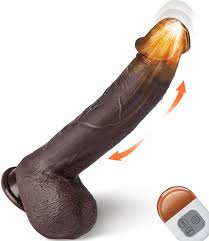Retainers After Braces: Use & Cleaning Guidelines
The journey to a perfect smile doesn’t end when your braces come off. While seeing straight teeth for the first time is exciting, maintaining those results requires ongoing care, specifically, wearing a retainer. Retainers are custom-made appliances that help “retain” your teeth’s new positions. Without them, your teeth may shift back to their original misaligned state.
Why Are Retainers Necessary?
After wearing braces, your teeth remain vulnerable to movement. The bone and gum tissues surrounding them need time to stabilize in their new positions. Retainers in Arlington are designed to hold your teeth in place during this crucial period of adjustment. Think of them as insurance for the time, effort, and cost invested in your orthodontic treatment.
Neglecting to wear your retainer consistently can result in relapse, meaning your teeth might begin to shift back, undoing months or even years of progress. That’s why orthodontists emphasize the importance of post-braces retention.
Types of Retainers
There are two main types of retainers:
1. Removable Retainers:
These include Hawley retainers (made of acrylic and metal wire) and clear plastic retainers (like Essix retainers). They’re easy to take out for meals and cleaning but must be worn as directed to be effective.
2. Fixed Retainers:
These are small wires bonded to the back of your teeth, usually the lower front ones. They are discreet and eliminate the risk of forgetting to wear them, but they require extra care when brushing and flossing.
Your orthodontist will recommend a retainer type based on your treatment needs and lifestyle.
How to Use Your Retainer
1. Follow Your Orthodontist’s Instructions:
Typically, you’ll be advised to wear your retainer full-time initially—about 22 hours per day. After a few months, you may transition to nighttime wear only. However, this timeline varies based on individual needs. Follow your dentist.
2. Wear It Consistently:
The biggest mistake people make is wearing the retainer inconsistently. Skipping days can allow teeth to shift, making the retainer uncomfortable or even unusable later.
3. Handle With Care:
Always use both hands when removing or inserting your retainer to avoid bending or cracking it. Keep it in its case when not in use—never in a napkin or pocket where it can be lost or damaged.
Cleaning Guidelines for Retainers
Proper cleaning is essential for keeping your retainer free from bacteria, plaque, and odors. Here’s how to do it:
1. Rinse After Removal:
Always rinse your retainer with lukewarm water when you take it out. This helps remove saliva and prevents dry buildup.
2. Daily Brushing:
Use a soft-bristled toothbrush and non-abrasive toothpaste or mild soap to gently brush the retainer. Avoid using hot water, which can warp plastic retainers.
3. Deep Clean Weekly:
Soak your retainer in a specialized retainer cleaner or a homemade solution (like a mix of water and white vinegar or baking soda) once a week. This keeps it fresh and sanitary.
4. Avoid Harsh Chemicals:
Never use bleach, alcohol-based mouthwash, or dishwashers to clean your retainer—they can damage the material and affect fit.
5. Keep Fixed Retainers Clean:
For bonded retainers, flossing is crucial. Use floss threaders or water flossers to get under the wire and remove trapped food or plaque.
When to Replace Your Retainer
Retainers don’t last forever. Over time, they may wear out, crack, or no longer fit due to changes in your bite or teeth. If your retainer feels uncomfortable or damaged, consult your orthodontist or dentist in Arlington to obtain a replacement before your teeth begin to shift.
Conclusion
Wearing and caring for your retainer is just as important as the orthodontic treatment that came before it. Once your braces are removed, your teeth still need time and support to stay in their new, aligned positions. That’s where your retainer comes in—it helps maintain the results you worked so hard to achieve. To ensure long-lasting success, always follow your orthodontist’s instructions regarding how often and how long to wear your retainer. Clean it regularly to prevent bacteria buildup and unpleasant odors. If your retainer feels uncomfortable, doesn’t fit properly, or gets damaged, don’t hesitate to contact your orthodontist. With consistent care and attention, your straight, confident smile can last a lifetime.













